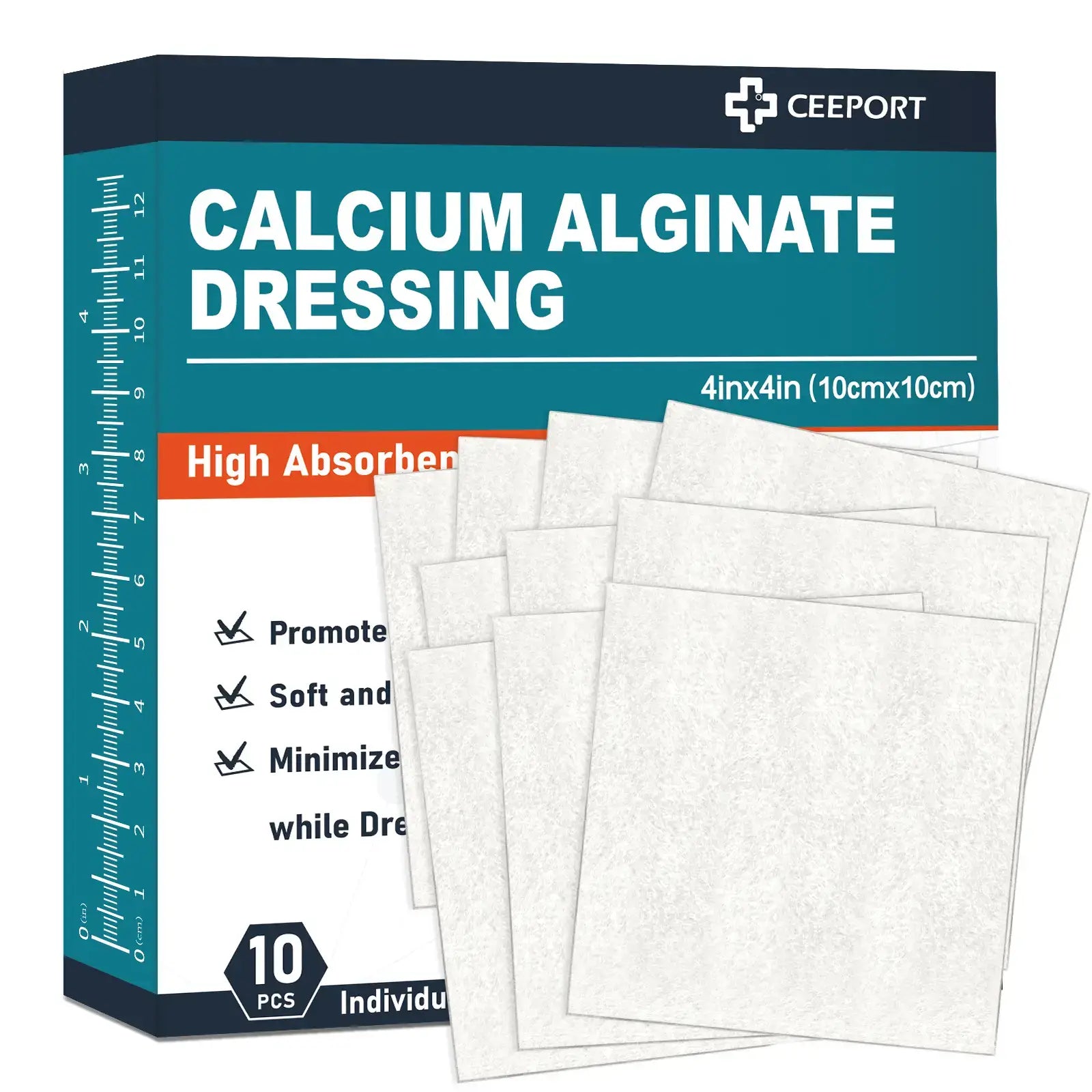
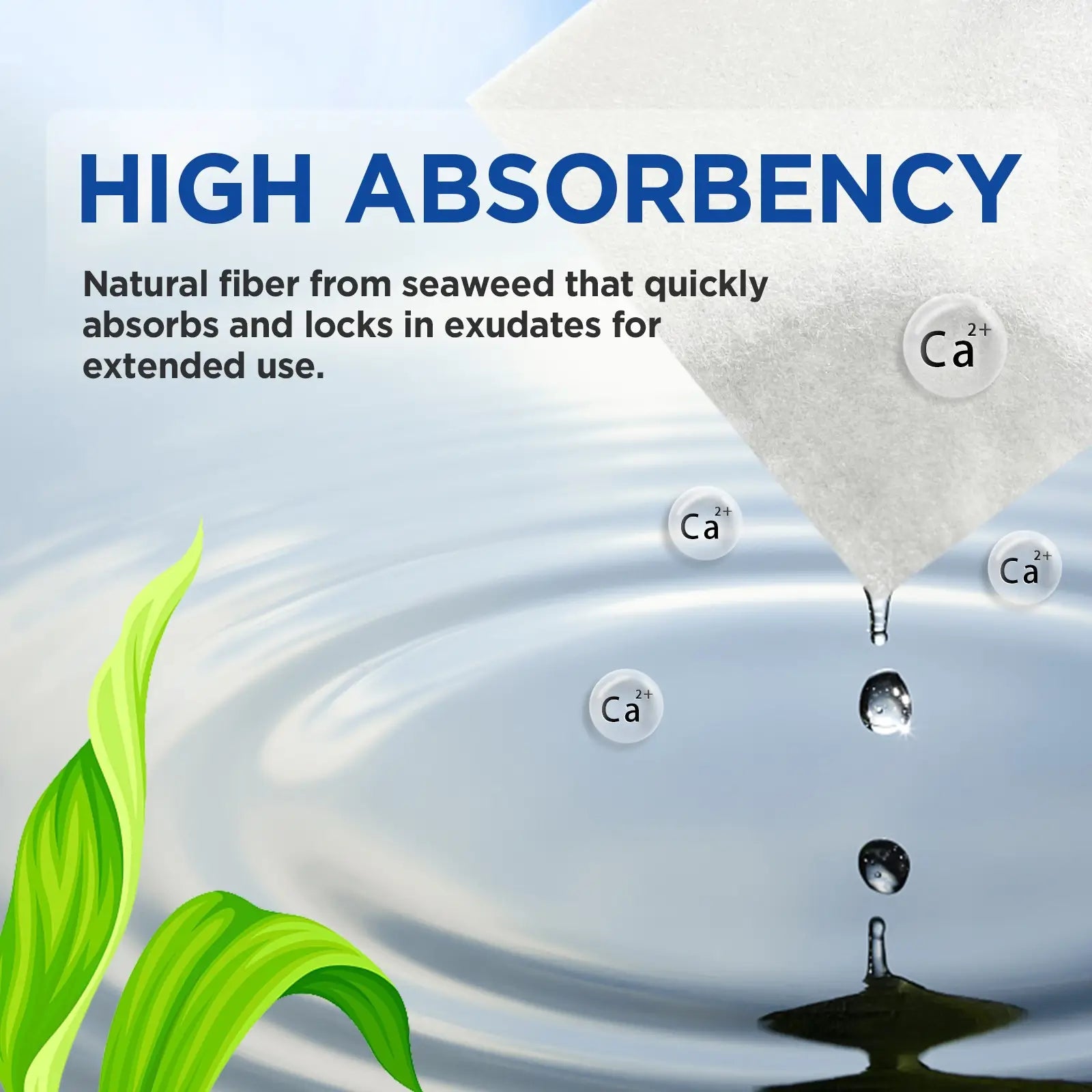
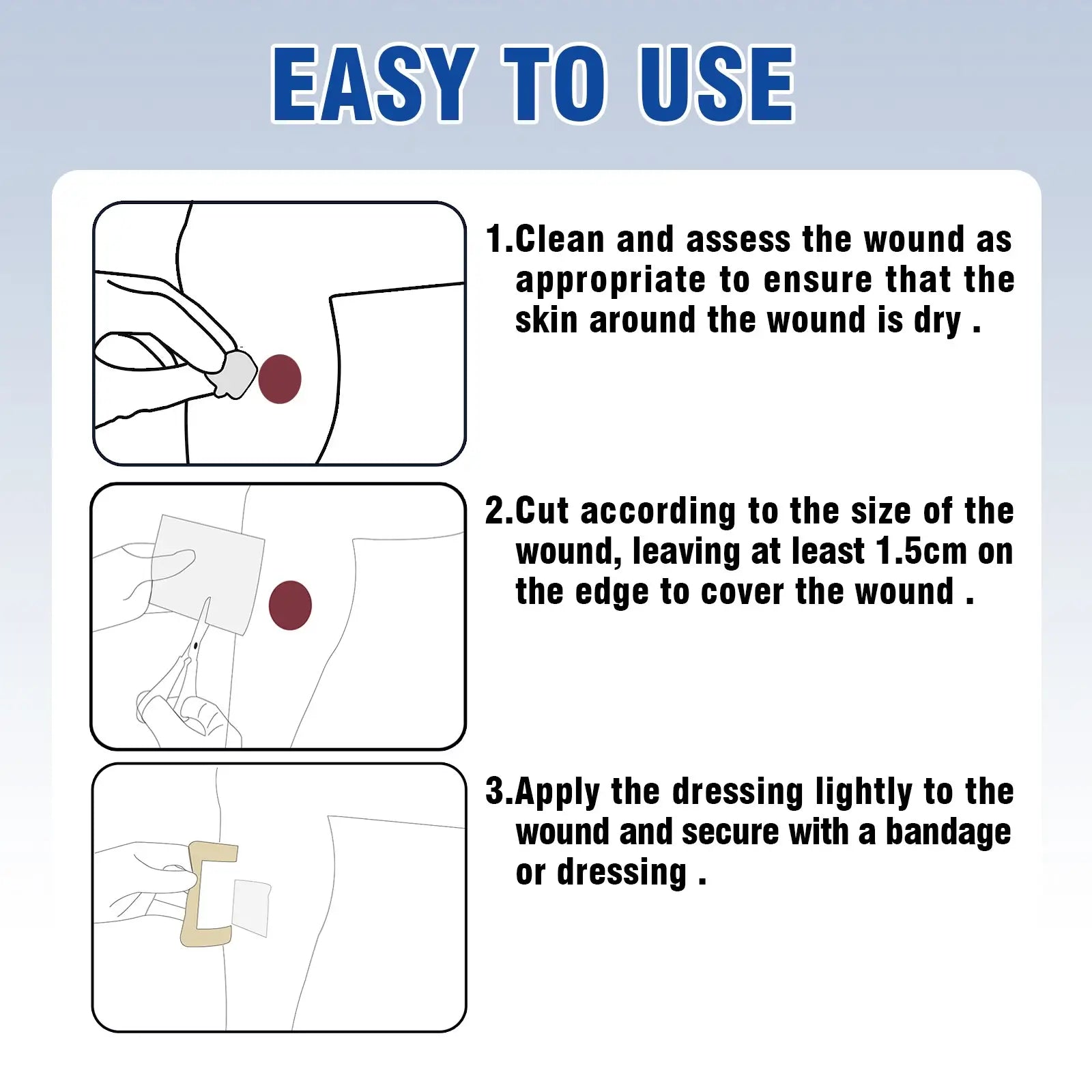

CEEPORT Calcium Alginate Dressing | Advanced Wound Care for Pyoderma Gangrenosum
Indications
This product is suitable for all kinds of medium to high exudative wounds, acute and chronic bleeding wounds, difficult-to-heal wounds, donor site wounds, and various cavity wounds.
For example, ulcers, bedsores, diabetic foot, surgical wounds, sinus tracts, 1st & 2nd degree burns, etc.
DETAILS
Material
- Natural seaweed
- Calcium ion
Main Mechanism
- It forms a hydrogel on the wound surface, moisturizing the wound and promoting healing.
- The exchange of Ca²⁺ and Na⁺ activates prothrombin, promoting coagulation.
- It protects nerve endings and alleviates wound pain.
- The fibers absorb moisture and swell. Bacteria are trapped between the fibers, providing antibacterial properties.
Key Features
- High absorption capacity
- Excellent wet and dry strength
- Fast gelling
- Promotes healing through a moist wound environment
- Comfortable and soft, painless removal
Cautions
- This product is not suitable for dry wounds.
- Clean the wound and dry the surrounding skin before use.
- Ensure the dressing covers at least 2 cm beyond the wound edge.
- The dressing should not stay on the wound for more than one week.
- When wound exudate decreases, discontinue use of this product and switch to other dressings, such as hydrocolloid dressings.
- When using packing strips, first determine the size and depth of the wound. Start filling from the base of the wound, avoiding dead spaces to ensure proper healing.
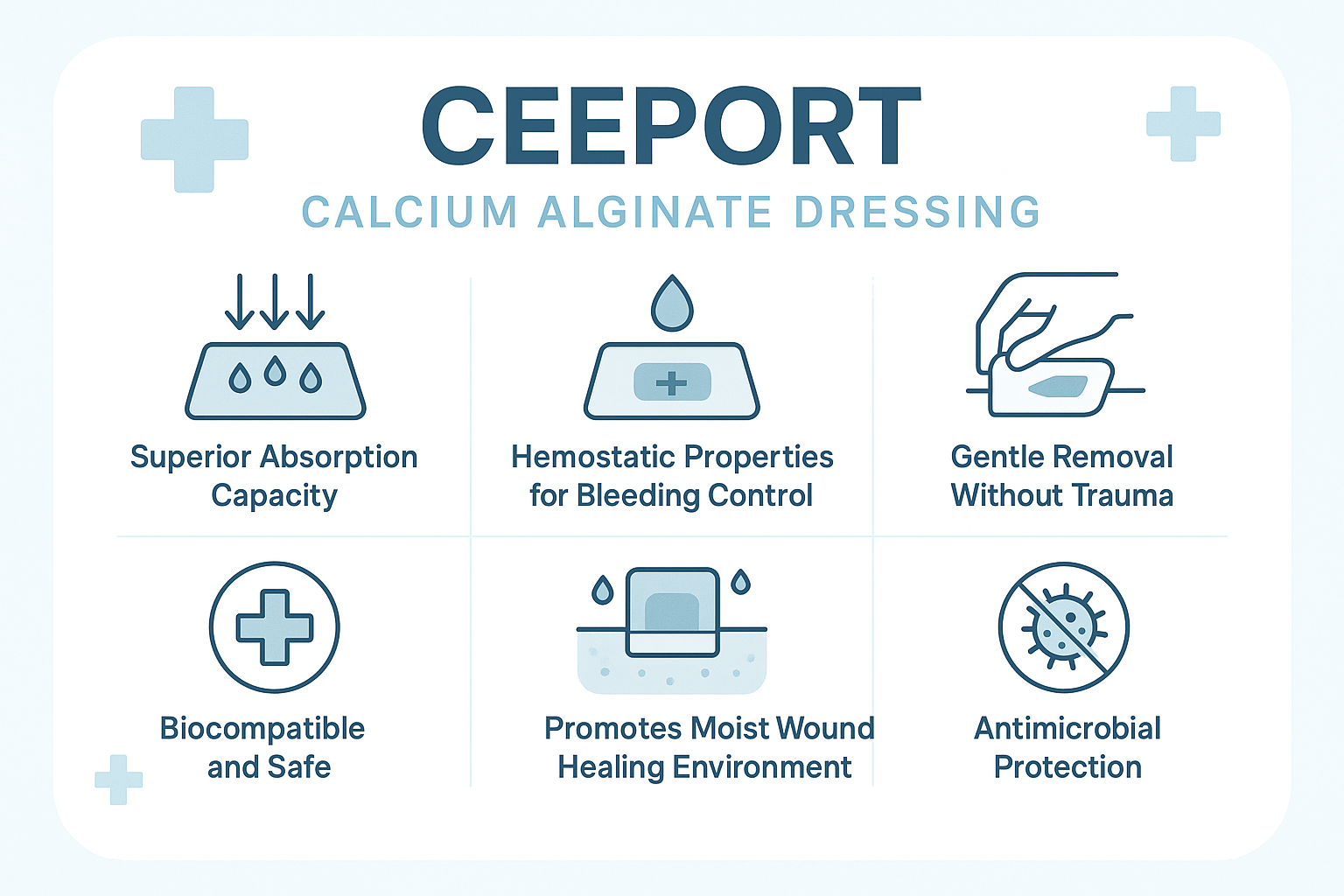
Why It’s the Best Wound Dressing for Pyoderma Gangrenosum
- High Exudate Management – Calcium alginate matrix absorbs and retains large volumes of wound fluid, reducing the frequency of dressing changes.
- Atraumatic Removal – Gel formation minimizes adherence to the wound bed, lowering the risk of tissue damage and secondary bleeding.
- Optimal Healing Environment – Maintains moisture balance essential for autolytic debridement and faster wound progression.
- Reduced Infection Risk – Effective exudate control helps limit bacterial proliferation in complex, chronic wounds.
- Clinical Versatility – Suitable for irregular wound shapes, cavity wounds, and long-term management in patients with fragile skin.
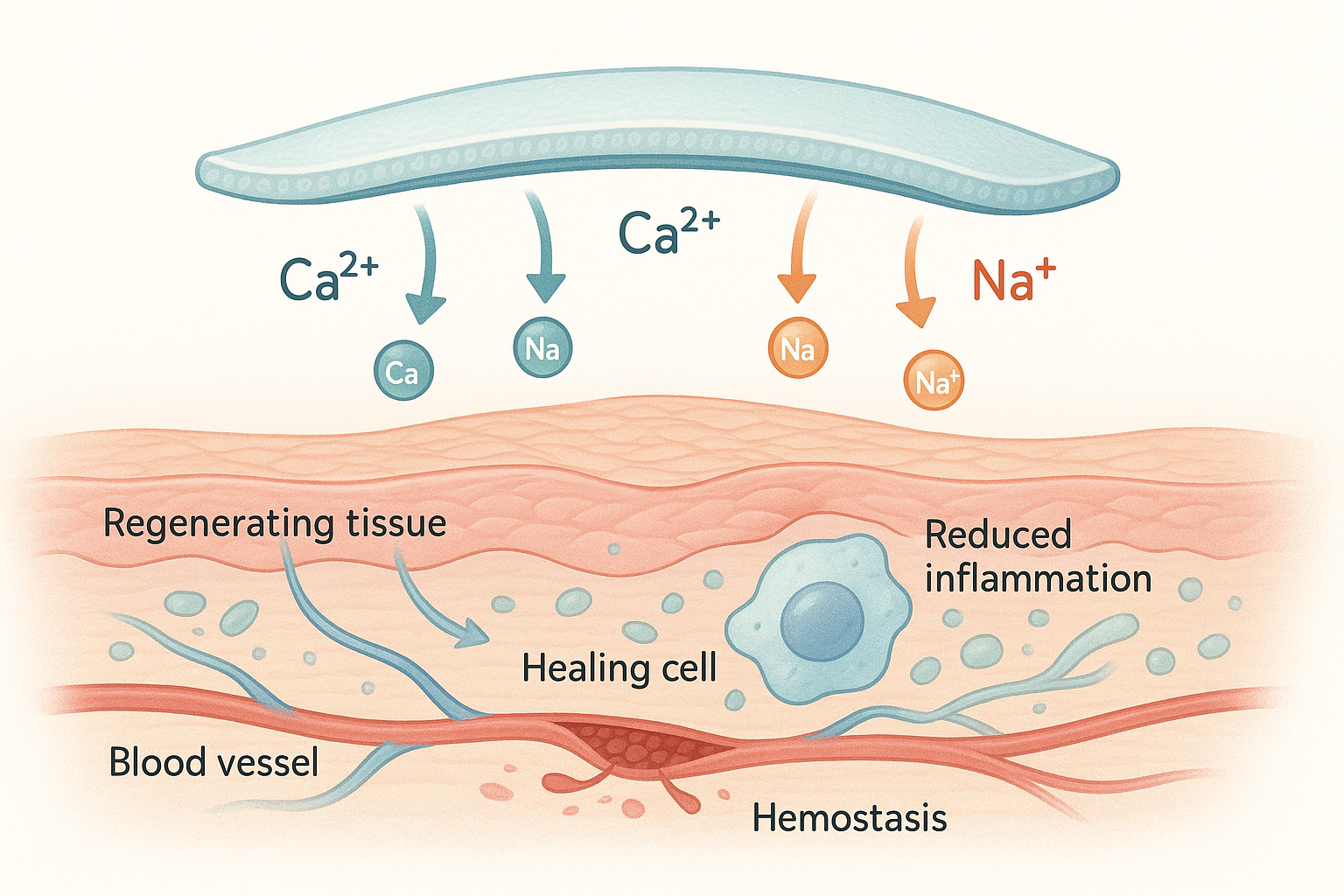
Core Benefits of CEEPORT Calcium Alginate Dressing
- Powerful Absorption – Effectively manages moderate to heavy wound exudate, keeping the wound clean and reducing leakage.
- Pain-Free Dressing Changes – Forms a soft gel upon contact with fluid, ensuring gentle removal without damaging fragile skin.
- Supports Healing – Creates and maintains a moist wound environment that promotes faster tissue regeneration.
- Enhanced Protection – Helps reduce the risk of infection by locking in exudate and shielding the wound from contaminants.
- Comfort for Daily Use – Soft, flexible, and breathable design adapts to various wound sites for patient comfort.

Ion-Exchange Healing Mechanism
Through calcium-sodium ion exchange, our dressing releases calcium ions that promote hemostasis and support cellular activity—perfect for immune-compromised wound healing processes like pyoderma gangrenosum.
Reduced Risk of Infection
By managing excess exudate and creating an isolated healing zone, the dressing minimizes bacterial spread and supports autolytic debridement—reducing the risk of secondary infection.
Suitable For
- Pyoderma Gangrenosum – Provides gentle, high-absorption care for complex wounds.
- Pressure Ulcers – Helps manage heavy exudate and protect fragile skin.
- Venous Leg Ulcers – Maintains moisture balance and reduces infection risk.
- Diabetic Foot Ulcers – Supports wound healing while minimizing pain during dressing changes.
Easy to Use

1. Clean
Clean and assess the wound asappropriate to ensure that the skinaround the wound is dry.
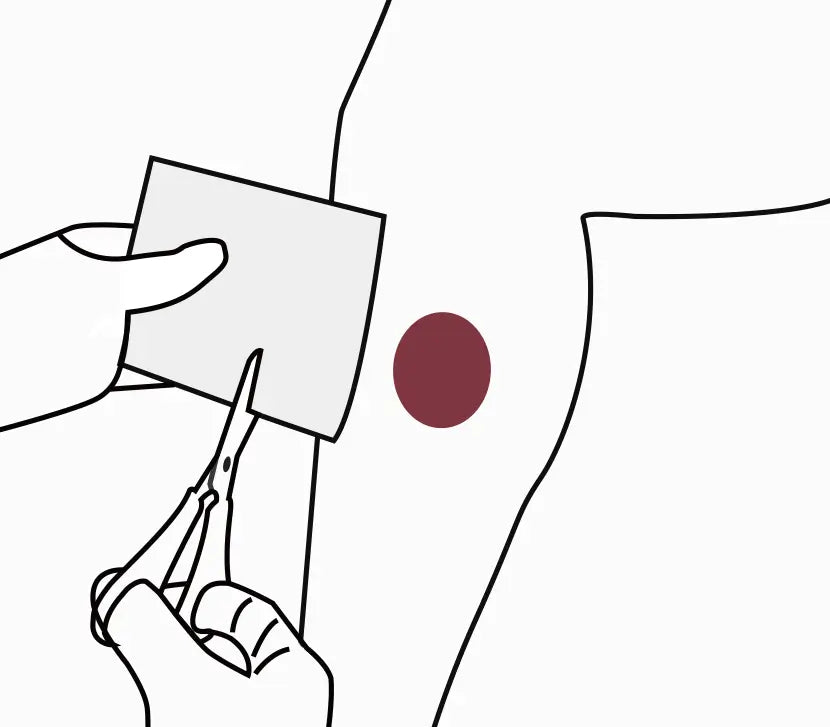
2. Cut
According to the size of the wound, cut it to the appropriate size.
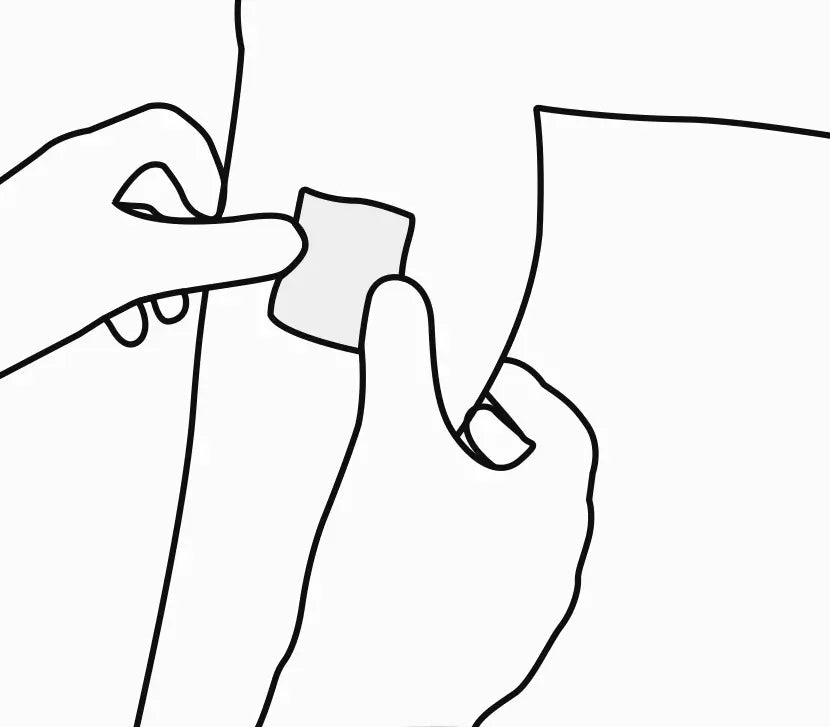
3. Apply
Apply the wound dressing to overlap the wound edges at least 1 cm.
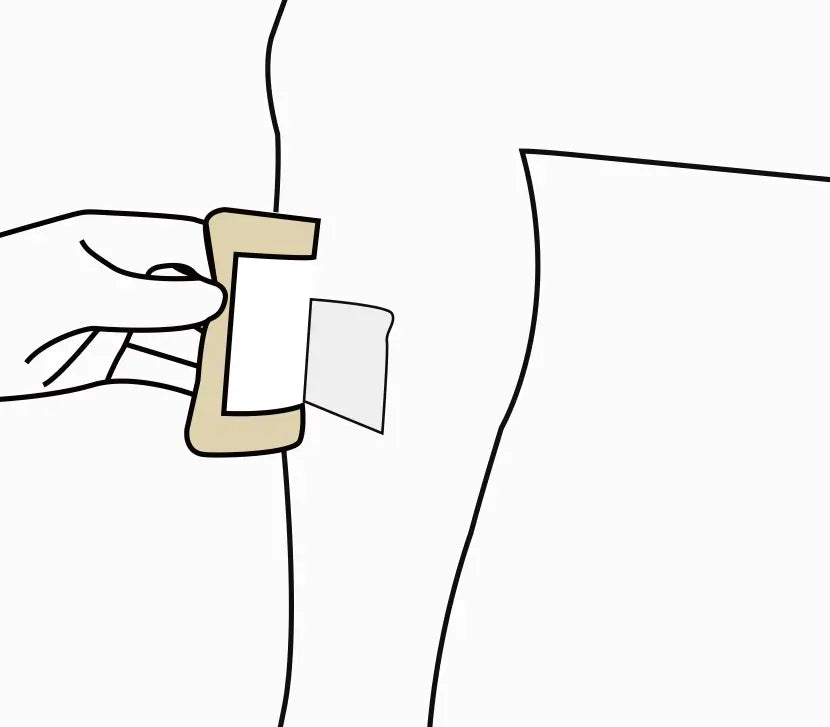
4. Fix
Fixed it with a bandage or dressing.
You asked, we answered.
What is a calcium alginate dressing used for?
Calcium alginate dressings are commonly used to manage moderate to heavily exuding wounds, including pressure ulcers, leg ulcers, surgical wounds, and burns. They are designed to absorb excess exudate while maintaining a moist environment that supports wound care.
How does a calcium alginate dressing work?
When the dressing comes into contact with wound exudate, the calcium ions in the alginate fibers react to form a soft, gel-like substance. This gel helps to absorb fluid and conforms to the wound bed, creating a protective layer that assists in managing moisture and minimizing the risk of maceration.
Can calcium alginate dressings be used on dry wounds?
No, calcium alginate dressings are not suitable for dry or minimally exuding wounds. They require moisture to activate their gel-forming properties. For dry wounds, a different type of dressing designed to hydrate the wound may be more appropriate.
How often should a calcium alginate dressing be changed?
Dressing changes depend on the level of wound exudate. Typically, calcium alginate dressings are changed every 1 to 3 days or when the dressing becomes saturated. Always follow healthcare provider instructions for dressing changes.
Is calcium alginate dressing safe for sensitive skin?
Yes, calcium alginate dressings are generally well-tolerated and are made from natural seaweed-derived fibers. They are non-adherent, which means they are gentle during removal and help reduce trauma to the wound site.




